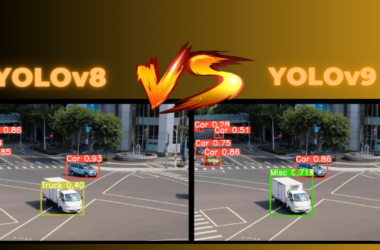Getting Started with OpenCV and Xcode for iOS Development
The Open Source Computer Vision Library (OpenCV) is an essential tool for computer vision and machine learning projects, particularly in iOS app development. By integrating OpenCV into iOS projects, you can unlock a whole new range of possibilities. To get started, the first step is to set up the OpenCV library within the Xcode environment. This involves carefully downloading and installing the necessary OpenCV framework, and then seamlessly incorporating these framework files into the Xcode project.
Customizing iOS Apps using OpenCV and Swift
The integration of OpenCV and Swift offers new opportunities for customization in iOS apps. It also takes advantage of Swift’s technical features for efficient development. Swift’s powerful type inference system enables fast conversion of values between different data types, creating a seamless bridge between the robust OpenCV library implemented in C++ and the iOS app. This integration allows developers to build personalized and user-friendly interfaces without getting caught up in the complexities of C++ code. Additionally, Swift’s extensive library support expands the capabilities of OpenCV, making it easy to incorporate advanced image processing and computer vision techniques.
Implementing Object Detection in iOS with OpenCV
OpenCV is a powerful tool for object detection and is widely used in iOS development. Developers can use OpenCV’s machine learning capabilities to easily implement complex tasks such as face detection and feature detection. This enables real-time object detection on iOS platforms and allows developers to create applications with advanced image-processing features.
Using Xcode Tools for Developing OpenCV-powered Applications
The integration of OpenCV with Xcode offers numerous opportunities for developers. By incorporating OpenCV’s functionalities into iOS applications, developers can leverage Xcode’s visual tools and wizards to simplify the process. The visual interface streamlines workflows by enabling easy debugging, data visualization, and customization of app development. With these tools, developers can seamlessly integrate OpenCV into their projects, enhancing the overall development experience.
Ensuring Seamless OpenCV integration in iOS for Superior App Performance
Achieving optimal performance in iOS applications that utilize OpenCV requires a meticulous integration process. This process involves carefully compiling the OpenCV library, aligning it with the specific requirements of the iOS Software Development Kit (SDK), and ensuring that it is compatible with the appropriate device architectures. An essential aspect of this integration is managing the foreign function interface (FFI), which serves as a bridge to facilitate smooth communication between Swift, the programming language typically used for iOS app development, and C++, which is the language in which OpenCV is primarily written. Developers must accurately navigate and implement these intricate components and techniques to guarantee superior application performance within the iOS ecosystem. This comprehensive integration approach not only optimizes functionality but also enhances the overall user experience, demonstrating the potential of iOS applications utilizing the capabilities of OpenCV.
Troubleshooting tips for OpenCV set-up in Xcode
Setting up OpenCV in Xcode can be challenging and may involve encountering compilation errors, configuration issues, or problems related to the OpenCV library itself.
– Overcoming these hurdles requires leveraging the collective knowledge and expertise of the OpenCV community and consulting the official documentation provided by Xcode.
– The Apple developer forums offer a valuable resource for developers by providing troubleshooting tips and effective workarounds to help navigate potential issues successfully.
– By tapping into the wealth of information available within the OpenCV community and referring to Xcode documentation, developers can streamline the integration process and address any issues that may arise during the setup of OpenCV in the Xcode environment.
– This proactive approach ensures a smoother development experience and empowers developers to harness the full potential of OpenCV in their Xcode projects. Real-world applications of OpenCV in iOS.
In the realm of iOS applications, OpenCV’s practical applications are diverse and impactful, encompassing functionalities like facial recognition, object detection, and augmented reality. Social media and e-commerce enterprises harness the power of OpenCV to integrate compelling features such as creative filters, effectively elevating the user experience and enriching the photographic capabilities of their applications. By incorporating OpenCV, these companies can provide users with advanced visual enhancements, fostering greater engagement and innovation within their platforms. Whether in the realm of image analysis, augmented reality experiences, or creative filters, OpenCV stands as a versatile tool that significantly contributes to the enhanced functionality and appeal of iOS applications across various industries.
Key Considerations While Integrating OpenCV with Swift Language in iOS
To seamlessly integrate OpenCV with Swift, it’s important to establish a clear and understandable interface between C++ and Swift. Swift follows strict type safety rules, so implementing the integration requires thorough error-handling practices to ensure a reliable and resilient integration. This blog provides valuable insights and best practices to guide developers through the complexities of the integration process. By addressing the nuances of maintaining clarity in the interface and incorporating effective error-handling strategies, developers can navigate the challenges of combining OpenCV with Swift. This ultimately results in a smooth and reliable integration that aligns with best practices for optimal performance and maintainability.
Exploring Computer Vision Techniques with OpenCV and Swift on iOS
The symbiotic relationship between OpenCV and Swift can be a powerful catalyst for developers. It provides them with the ability to explore advanced computer vision techniques on the iOS platform. These techniques include image segmentation, feature extraction, object detection, and pattern recognition, which can help create sophisticated and intelligent applications. The blog provides a detailed exploration of these techniques, guiding developers on how to practically implement them. It also helps them understand the intricacies involved and provides insights that foster innovation in the realm of iOS app development. By harnessing the combined capabilities of OpenCV and Swift, developers can unlock the full potential of computer vision. This opens up possibilities for creating cutting-edge and intelligent applications that push the boundaries of innovation in the iOS ecosystem.
Enhancing iOS Applications with Machine Learning and Computer Vision using OpenCV
Leveraging machine learning and computer vision through OpenCV can amplify the functionalities of iOS applications, offering a comprehensive toolkit for diverse applications. OpenCV can streamline image processing tasks, facilitate advanced object recognition, and enable real-time detection, making it a versatile and indispensable resource. In this blog, we’ll explore the vast possibilities that arise from leveraging these technologies, illustrating how they collectively contribute to the development of a technologically superior app experience for users. By harnessing the power of OpenCV in conjunction with machine learning, developers can elevate their iOS applications to new heights, incorporating intelligent features that enhance user interaction and overall performance.

Dawood is a digital marketing pro and AI/ML enthusiast. His blogs on Folio3 AI are a blend of marketing and tech brilliance. Dawood’s knack for making AI engaging for users sets his content apart, offering a unique and insightful take on the dynamic intersection of marketing and cutting-edge technology.










